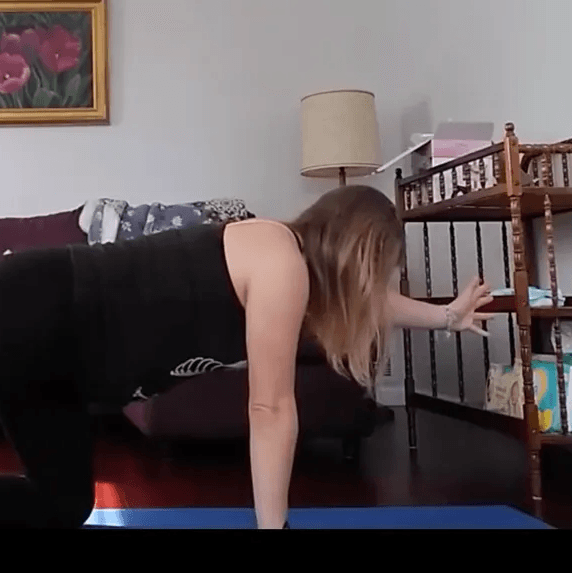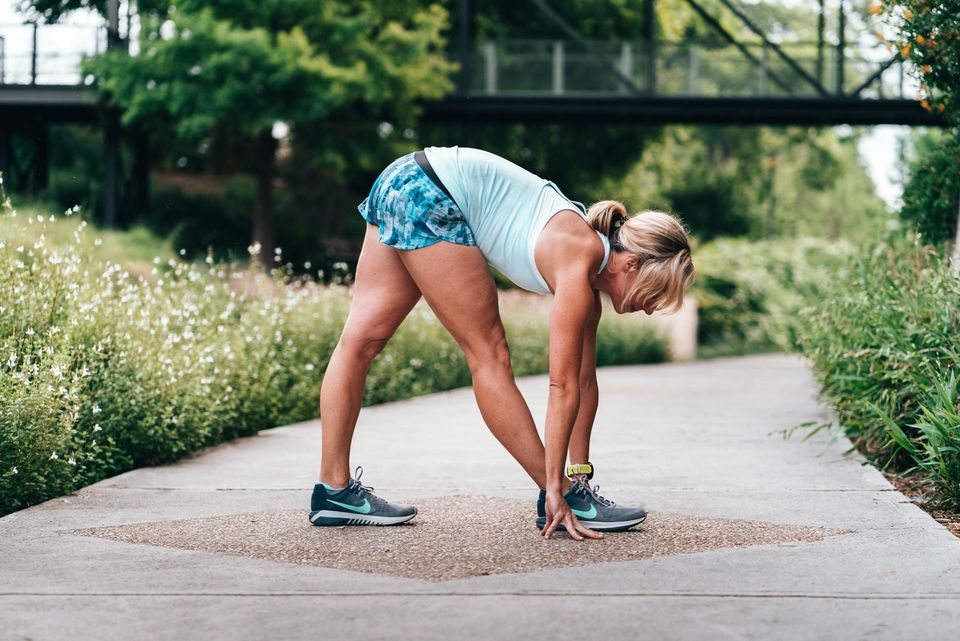By: Dr. Stephanie Duffey • May 19, 2020

By: Dr. Stephanie Duffey • May 19, 2020

Dr. Stephanie Duffey • Jun 15, 2020

Stephanie Duffey • Jul 06, 2020

By: Dr. Stephanie Duffey • Feb 10, 2020
By: Dr. Stephanie Duffey • Feb 17, 2020
By: Dr. Stephanie Duffey • Dec 04, 2019
As a physical therapist, I’m often asked the question, “How do I know when I need to slow down, stop, or keep going?” It’s a valid question, and one that many people struggle to identify. It’s challenging to interpret what you’re feeling in your body, when you can push harder, and when you need to scale back. So, to keep things simple, I came up with a little something I like to call the stoplight method. Let’s break it down.
Green Light: When you’re operating at the green light level, you’re able to exercise with no aches and pains and you may even be looking for ways to intensify your workouts. If you’re a runner, you’d be able to maintain the current pace or distance that you’re following with no discomfort. This is where you want to be (but I know this isn’t always possible or realistic).
What to do: Maintain what you’re doing, or experiment with advancing to the next level. For runners, this means working toward a faster pace or increasing your mileage.
Yellow Light: Signs to look for if you’re approaching the yellow light include light soreness or achiness that persists for more than 24 hours after your run, a small limp when running (but not when walking), and slight swelling of your joints after a run.
What to do: Slow down a bit—this is your body telling you to back-off. Take a rest day and re-evaluate how you’re feeling. Try to recognize patterns. For example, maybe your knees start to hurt when it’s time to get new running shoes, so take a trip to the shoe store! Listen to your body and take action if there’s a behavior you need to change to feel better and enhance your performance.
Red Light: If you’re approaching the red light, you’re experiencing very sharp pain that stops you in your tracks. The pain is debilitating and you are unable to walk without a limp. You may be experiencing intense swelling in your joints and intense discomfort that doesn’t subside after 24 hours.
What to do: It’s time to consult an expert. You may be at risk of a stress fracture or other serious injury. While it’s challenging to seek help and cease physical activity, it’s important to be seen by an expert early, so your injury doesn’t intensify. You may also be able to recover more quickly if you get help for the problem earlier rather than later.
I hope my simple stoplight method helps you identify how to deal with the pain you may be experiencing in your body and the action steps you need to take to feel better.
Need help from an expert? Let’s chat!
Paul Linden, PhD
Aikido of Columbus
www.being-in-movement.com
I have been practicing Aikido since 1969 and Parkinson’s Disease since 2004. Aikido is a non-violent Japanese martial art and a study of peacemaking. Parkinson’s is a degenerative disease of the brain. The two have a lot in common.
Many years ago, while visiting Los Angeles, I met a friend of a friend. As we were sitting together eating lunch, he casually said, “You know, I could kill you as you sit there.” I smiled and said, “Yes, of course you could” and kept eating. I knew he wasn’t being hostile but was merely expressing a fact. Astonished that I understood, he explained that he was a Viet Nam veteran, and that was his way of testing me.
He had killed many people, and he knew how thin the line is between life and death. He knew that anyone could die at any moment. Combat soldiers learned to live on the edge of life and death, and when they came home, they were unable to fit back into normal society, which pretends that death won’t happen. He was stunned that a non-veteran knew that edge. I told him about my martial arts training and how it was possible to know the edge without killing anyone.
Two concepts underlie Aikido as I practice and teach it: First, emotions and attitudes are physiological events in the body, and to receive an attacker in a peaceful way, the body must be trained to do so. And second, the body moves with better balance and strength in a state of inner stillness, kindness, and gratitude. (My website has a free downloadable handout titled EMBODIED PEACEMAKING which details the basic exercises that I use to teach this.)
• Copyright Columbus Dispatch 2013. The newspaper published this essay, and they were generous enough to allow me to use it in my teaching.
Practicing calmness when attacked and compassion for the attacker caries over to stresses and problems that aren’t attacks. Such as Parkinson’s, for instance. When I was diagnosed, my initial reaction was shock! And my practice for the next six months was to say to myself many times a day “Parkinson’s” and train my body to go into calmness instead of fear. Gradually stillness and compassion took the unease out of the disease.
The real function of martial arts, I think, is to help us accept our fundamental weakness. I can block a punch, I can parry a kick, and I can escape an arm lock. But I can’t control the weather, a presidential election, or whether I have Parkinson’s. Once we build up enough personal power, we can accept somewhat calmly the unacceptable.
Having Parkinson’s is inconvenient, but if I get frustrated or irritated at it, the tremors increase and the disease feels worse. The more I meet Parkinson’s with an attitude of compassionate engagement and relaxed strength, the better my body functions. This is not philosophy. It’s physiology.
The questions are: What do I choose to become as Parkinson’s eats away at my brain? Do I cultivate habits of fear or anger about my condition or habits of power and compassion? So in the end, practicing Parkinson’s is very similar to practicing Aikido.
Parkinson’s will never be popular as a path of self-improvement. The same approach, though, can be applied to everyday difficulties — whether personal, interpersonal or international. The world would be very different if people didn’t respond to difficulties in a rush of fear and anger. Think of all the killing and aggression that would not take place if we each took responsibility for our body and our hurtful reflexes. Peace would be possible.
—————————–
PAUL LINDEN, Ph.D. is a specialist in body awareness education, and his work focuses on the interplay between self-exploration and more efficient and effective action. He has extensive experience teaching people such as musicians, athletes, pregnant women, children with attention disorders, and computer users. Two of his focus areas are abuse recovery and peacemaking.
He is the developer of Being In Movement® mindbody education, and founder of the Columbus Center for Movement Studies. He holds a Ph.D. in Physical Education, a sixth degree black belt in Aikido and a first degree black belt in Karate, and he is an instructor of the Feldenkrais Method® of somatic education.
He is the author of a number of e-books, and videos, among which are:
• Winning is Healing: Body Awareness and Empowerment for Abuse Survivors
• Embodied Peacemaking: Body Awareness, Self-Regulation and Conflict Resolution
• Feeling Aikido: Body Awareness Training as a Foundation for Aikido Practice
• Comfort at Your Computer: Body Awareness Training for Pain-Free Computer Use (a paper book)
* Embodying Power And Love: Body Awareness & Self-Regulation 10 hour video.
By: Dr. Stephanie Duffey • Aug 03, 2020

By: Dr. Stephanie Duffey • Mar 02, 2020
Other than identifying what caused the irritation in the first place, here are some of my other tips for managing plantar fasciitis: